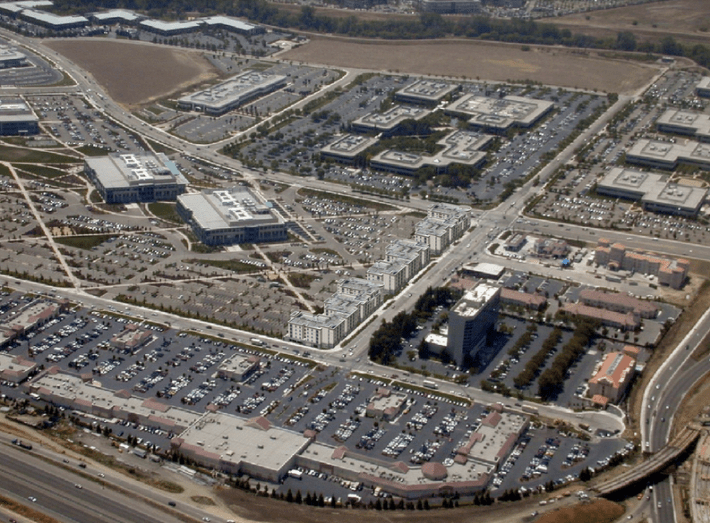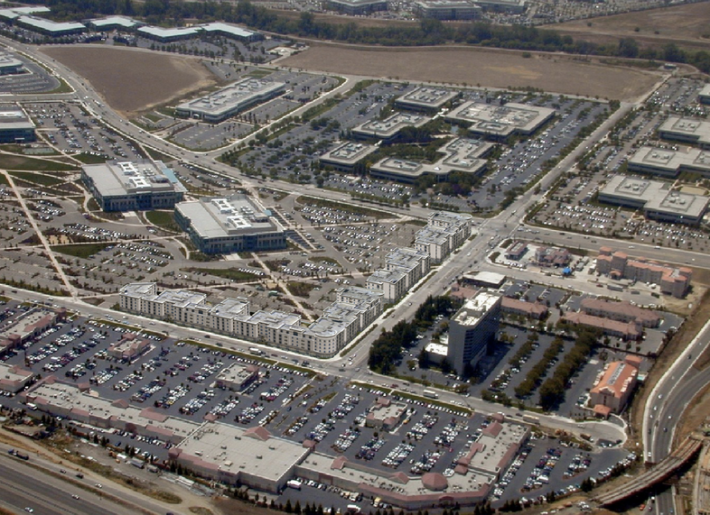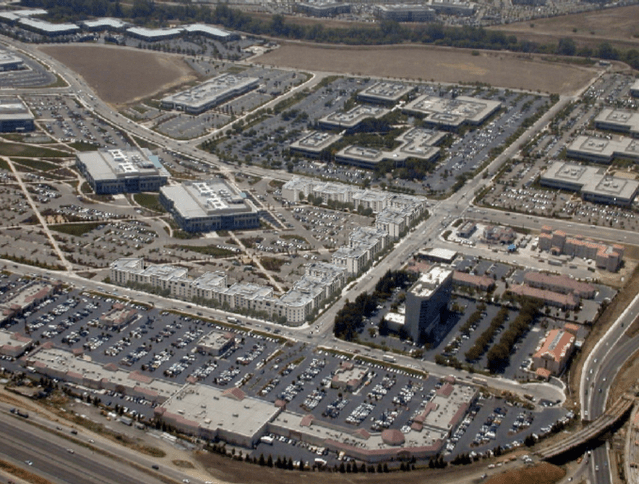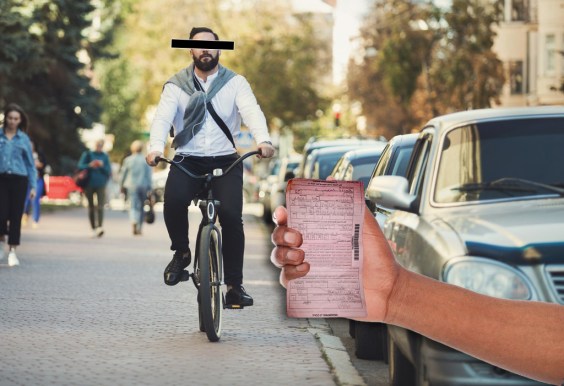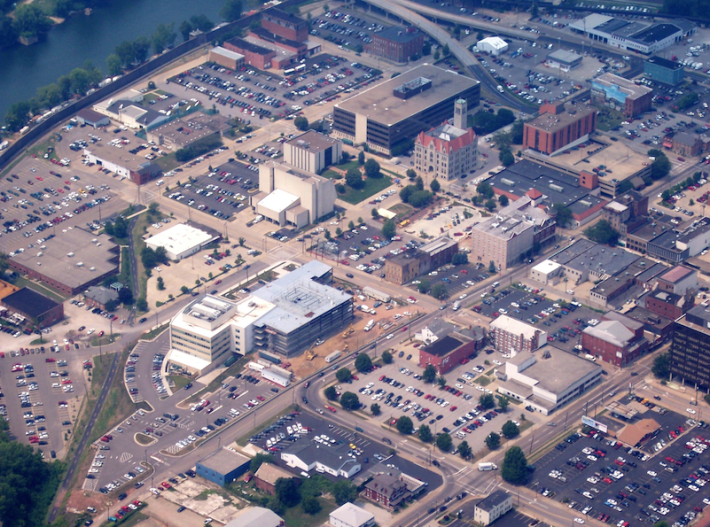
[Before we started up the bracket for this year's Parking Madness tournament, I got in touch with Donald Shoup, who literally wrote the book on parking reform, and asked him to pick the worst parking crater in the field of 16. Here's his response, packaged with some advice for cities that have a parking crater problem. -- Angie Schmitt]
All the entries deserve a prize, but I have to choose Parkersburg [above] as the worst crater, for several reasons. First, of course, is the city’s name. Second, Parkersburg has parking structures surrounded by surface parking lots. Third, parking lots separate the city from a beautiful river. And fourth, Elliott Lewis clearly explained why Parkersburg’s parking crater is so awful.
Other nominators also wrote superb indictments of their cities, including Marshall Allen for Syracuse, Bill Basford for Waterville, and Nick Sortland for Amarillo.
The upside of these obscene craters is that we have immense areas of vacant land ready for redevelopment right where people want to live and work. If cities remove their minimum parking requirements, these parking craters can become exciting parts of a healthy downtown. The four images below suggest the possible improvements.
This first photo shows an office building in San Jose, surrounded by all its required parking:
The building is as big as the city will allow, given the number of parking spaces provided. Suppose San Jose removes its minimum parking requirements, so some empty spaces on the perimeter of the parking lot can be used for housing.
The below image illustrates the first stage of what could happen if cities un-require off-street parking requirements:
The apartment building photoshopped onto one edge of the parking lot shows that land now devoted to parking could be developed as housing. Employees who live in these buildings could walk across the parking lot to work. The housing could be built without parking, greatly reducing its cost, and the existing parking spaces could be shared between the offices and the apartments.
So the upside of our current mess is that we have an accidental land reserve for housing right where we need it most. The land is already assembled in single ownerships and the sites are cleared for construction. The housing can be built without new parking because the existing spaces can be shared between office buildings and apartments.
To avoid a parking shortage, the owner will have to unbundle the cost of parking from the rent for both apartments and offices, so car owners will pay only for the parking spaces they use. Some residents who work in a nearby office building may find they can easily live with no car or only one car, and they would appreciate the freedom to rent an apartment without paying for two parking spaces.
If the first apartment building works out well and is more profitable than vacant parking spaces, the landowner can add more housing on the perimeter:
...and then even more:
All this can be done without displacing anyone because no one lives there now.
New Urbanists refer to perimeter buildings that mask a parking lot as "liner buildings," and they can be any type of development, including garden apartments, row houses, or shops and restaurants. The term "liner" suggests that the wrapping is a superficial way to hide what is inside, but in this case the wrapping would probably be far more valuable than the parking spaces it would replace.
In parking, as in everything else, there are opportunity costs. Money and time now spent on cars, fuel, and parking will be available for something better. Removing the parking requirements for both housing and offices can produce a cascade of benefits: shorter commutes, less traffic, a healthier economy, a cleaner environment, and more affordable housing.
And the benefits don’t stop there. If we reform our misguided planning for parking, the money now spent on cars and fuel will become available for other things. Cars and fuel are often imported, but we cannot import apartment buildings. Shifting spending from cars, fuel, and parking to housing construction will increase the demand for labor in a host of professions, such as architects, carpenters, electricians, engineers, gardeners, glaziers, laborers, lawyers, locksmiths, painters, plumbers, real estate agents, roofers, surveyors, and even urban planners. Importing less oil and hiring all these people to build infill development will boost the whole economy.
But to get these results we will have to do three things. First, remove off-street parking requirements in zoning ordinances to make infill development possible. Second, charge market prices for on-street parking to prevent parking spillover from the new development. And third, spend the new revenue on neighborhood public services to make these market prices politically acceptable. The results will address many important problems Americans now face.
The upside of the mess we have made is that we have an accidental land bank readily available for job-adjacent housing. But this land is now locked up in required parking. If cities remove their unwise parking requirements, infill development on American parking craters can be the world’s largest land-reclamation project outside the Netherlands. Congratulations to Streetsblog and Angie Schmitt for showing us a historic opportunity.

